Saint-Étienne
Venue
The Summer School will be held at the NOVOTEL Saint-Étienne Centre Gare.
5 Cours Antoine Guichard
42100 Saint-Étienne
The accommodation will be provided at the Maison des Élèves.
20 Bd Alexandre de Fraissinette
42100 Saint-Étienne
Local Bus
FROM Chateaucreux railway station/NOVOTEL Saint-Étienne Centre Gare TO Maison des Élèves
Take the Bus M4 at CHATEAUCREUX bus stop in front of the railway station and get down at LA REJAILLERE bus stop (15 stops ~30 min).
FROM Maison des Élèves TO Chateaucreux railway station/NOVOTEL Saint-Étienne Centre Gare
Take the Bus M4 at 20, BOULEVARD ALEXANDRE DE FRAISSINETTE bus stop and get down at CHATEAUCREUX bus stop in front of the railway station (15 stops ~30 min).
Further information about local bus schedule, please visit the STAS website
Arrive
by Car
Motorway A72 Clermont-Ferrand / Saint-Etienne
Motorway A47 Lyon / Saint-Etienne
Route 82 Roanne / Saint-Etienne
Route 88 Firminy - Le Puy / Saint-Etienne
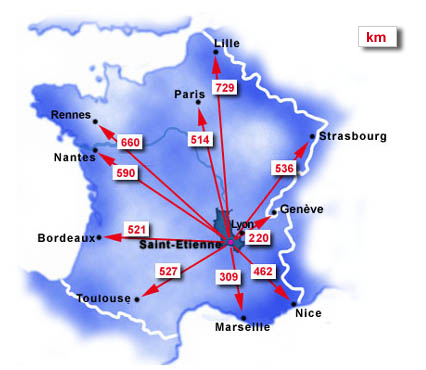
by Train
Direct links from Paris, Lyon, Marseille by T.G.V. to Saint-Étienne Chateaucreux railway station
For further information about train schedule and booking, please visit the SNCF website

by Plane
Take a Rhônexpress tram (every 30 min) to Lyon Part-Dieu railway station, and then take a train to Saint-Étienne Chateaucreux (1 per hour).
Another alternative is to take the PROXAIR shuttle from the Airport to Saint-Étienne. For further information and booking please visit the PROXAIR website.
Attractions
Long gone are the days of pits and coal mining. Ten years ago Saint-Étienne made an economic reconversion towards the new technologies (optics, biomedical, high-tech mechanics). Although the town has also undergone a cosmetic transformation (restoration, sandblast cleaning, rehabilitation and conversion) it has lost nothing of its original charm, thanks largely to the talents of Catalan architect Ricardo Bofill. Retaining undiminished spirit of daring innovation, the town seems on the verge of becoming the design capital of the world. As an exceptional cultural centre with prestigious museums and a plethora of cafés, theatres, clubs and restaurants, Saint-Étienne is a genuine metropolis.
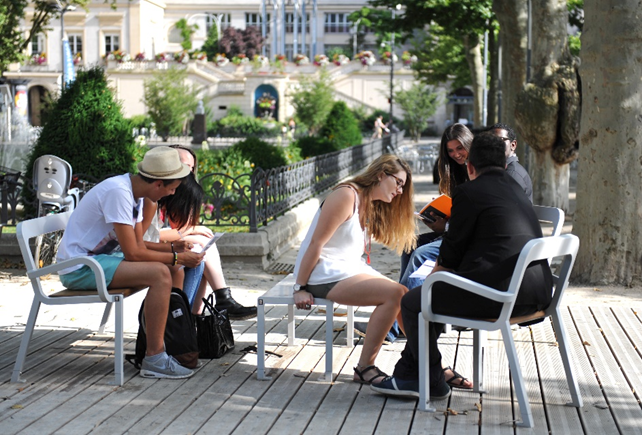
About Saint-Étienne, a cultural metropolis at the door of wonderful natural park. The era of coal mining and metal working firmly belongs to Saint-Étienne’s past. The city has clearly evolved towards an economy based on new technologies. However, the city hasn’t forgotten his remarkable industrial history. It is the only city in France selected as historical city for the 19th century. Beyond the Art and Industry National Museum with its unique collection of elaborate weaponry, unusual bicycles and braided ribbons, a complete industrial heritage is there to be visited.
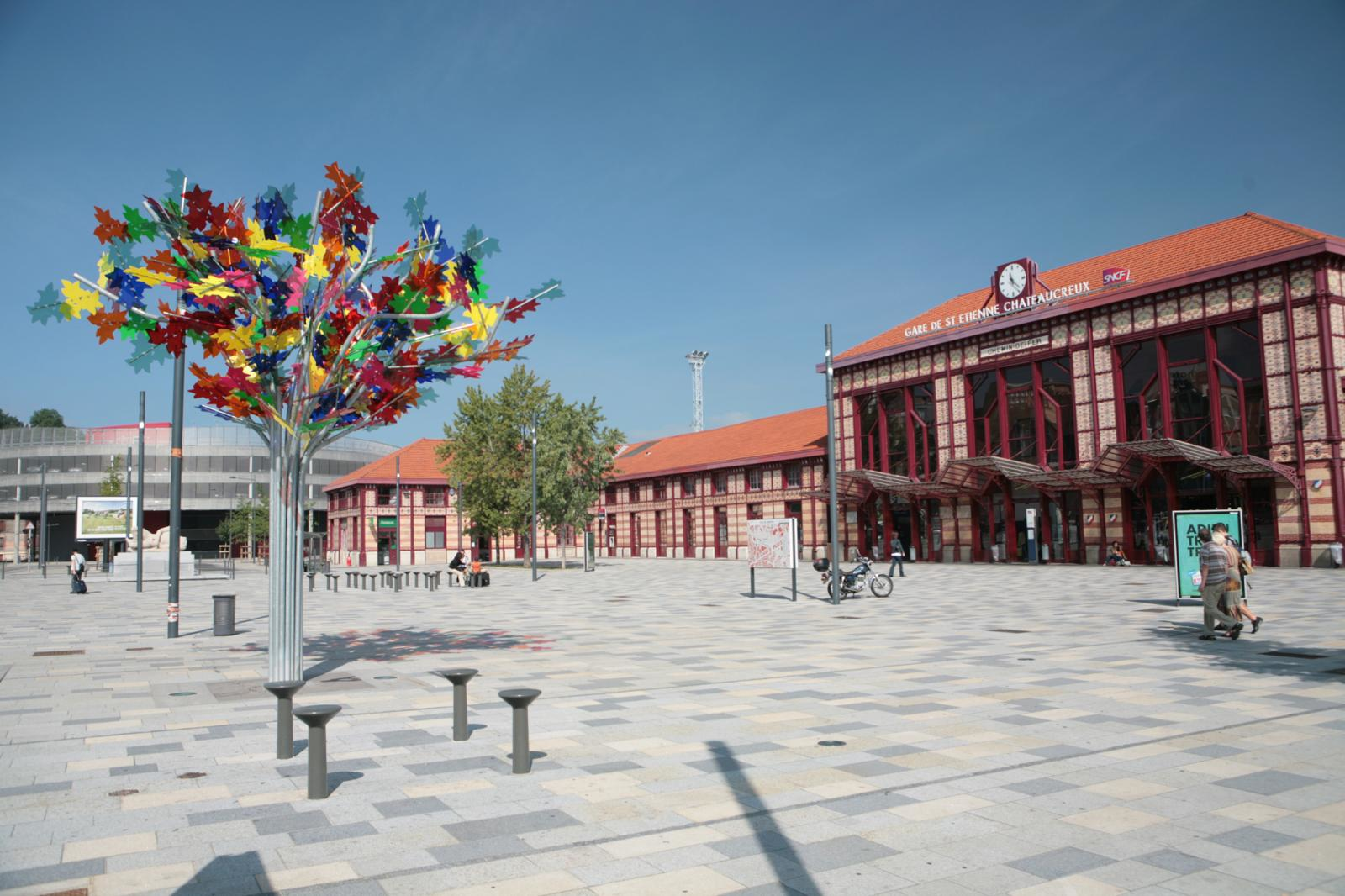
Saint-Étienne does not only have a rich industrial past but an exciting cultural present. Retaining undiminished spirit of daring innovation, the town seems on the verge of becoming the design capital of the world. The design heritage was the impetus behind the creation, in 1998, of the biennial international festival of design, which was an immediate success (150 000 visitors in 2002). With an internationally renowned Modern Art Gallery, Saint-Étienne offers an exceptional cultural center completed with a plethora of cafés, theatres, clubs and restaurants.
Situated at only 60 km from Lyon, Saint-Étienne is at the crossroads of the major French motorways making easily accessible cities like Geneva, Marseilles, Paris and region like the Alps, Drôme and Provence. The region of Saint-Étienne has much to offer. With a town center situated a stone’s throw from the Pilat a regional Nature Park, the Forez mountains and the gorges of the River Loire, Saint-Étienne will give you a direct access to wonderful landscape with medieval villages and old stone castles scattered around. In the middle of the regional park, Saint-Victor water sport center will give you all the opportunities of sailing, water-skiing or canoeing.
Saint-Étienne does not only have a rich industrial past but an exciting cultural present. Better still it has managed to combine the two in a number of daring, ingenious and aesthetically challenging ways. A magnificent example of this is the Museum of Art and Industry with its unique collection of elaborate weaponry, unusual bicycles and braided ribbons.
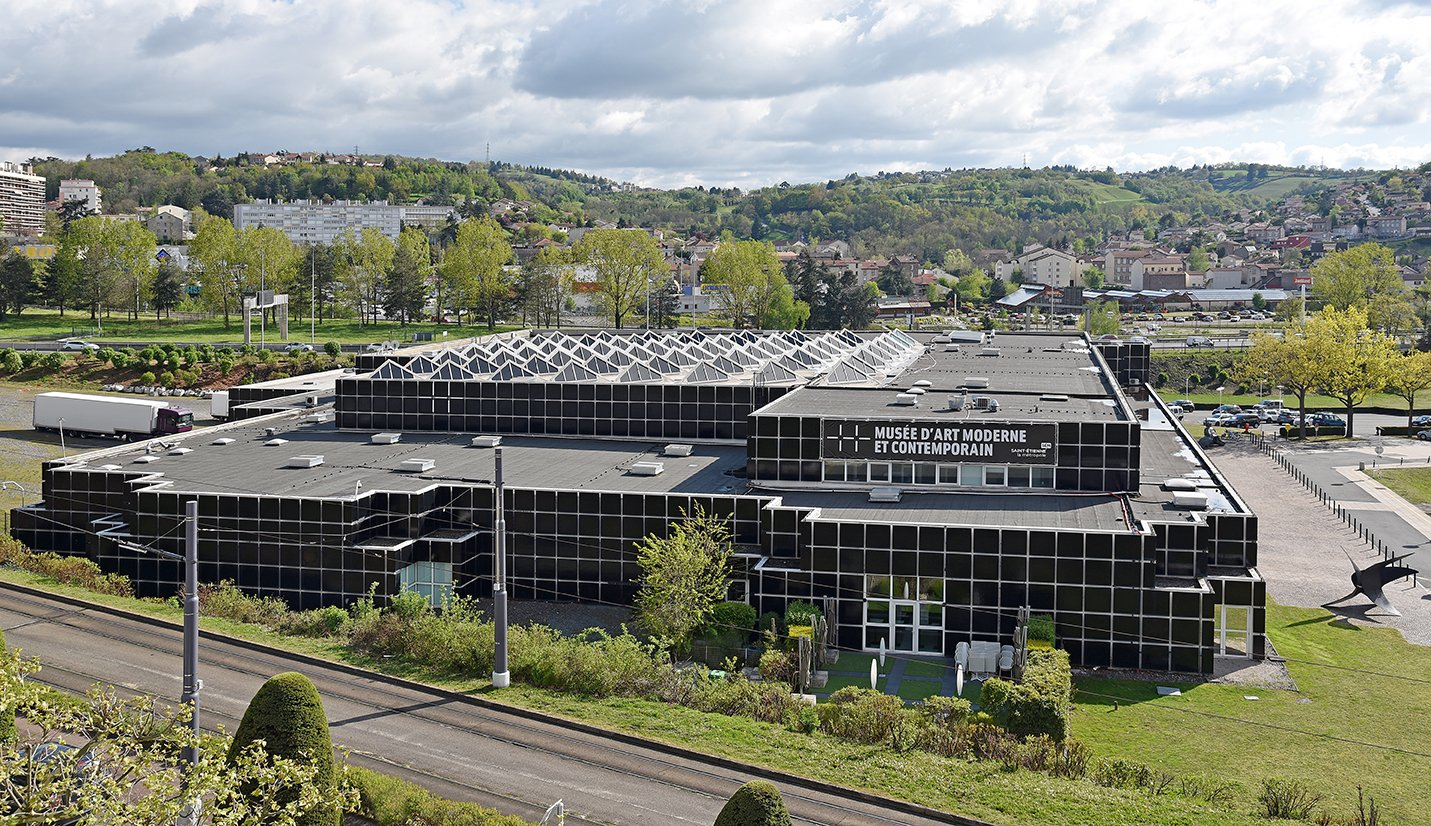
In 1987 the town opened its now internationally renowned Modern Art Gallery (80000 visitors per year), which houses a collection of contemporary art, second only to the Georges Pompidou centre in Paris. With paintings, sculptures and visual installations, the museum is home to over 10000 works of art (Dubuffet, Soulages, Viallat, Klein, Warhol, Buren, etc.), which are constantly added to, thanks to the active acquisitions policy of the museum’s directors. In addition to this ever-increasing collection is a unique 600-piece exhibition of French industrial design (Eames, Le Corbusier, Prouvé, Perriand and many others).
Saint-Étienne regularly hosts a wide variety of cultural events and in 2000 was awarded the title of “Town of Art and History”. For three days every year in October, the squares and market squares of the town centre are covered with marquees which house one of the country’s largest book festivals, welcoming over 120000 visitors and 500 authors. Another not-to-be-missed event is the “Art dans la Ville”, a week in early June dedicated to local artists during which all visual arts are exhibited in original and quirky locations.

In fact, Saint-Étienne is home to French industrial design and bas been since its potential was recognised at the beginning of the 19th century. It is not by accident that Le Corbusier chose the Saint-Étienne region to construct the most complete example of his architectural genius. At Firminy (approximately 15 kilometres outside the town) stands a residence, a cultural centre, a sports stadium and a church all designed by this talented town planner.
This design heritage was the impetus behind the creation, in 1998, of the biennial international festival of design, which was an immediate success (150000 visitors in 2002). For ten days every other year, the town’s exhibition park is filled with design objects from all over the globe (from the words of fashion, consumer goods and urban innovation) giving the visiting public a remarkable overview of the diversity of creation in the sector. The success of the festival has prompted the town to create a permanent exhibition hall and creativity centre, the International Centre for Design, now located in the centre of town on the derelict site of a now defunct arms manufacture.
The International Centre for Design is not “just another design center” but a highly innovative concept bringing together science, technology and industry. Casting a wide net over artistic creation, innovation and technological transfer, education and forecasting of future product development, the centre is a genuine ideas laboratory, promoting a constant interaction between culture, research and economics. One particular project is a program of economic development the aim of which is to raise the profile of design in business and to increase interaction between local, national and international players. One thing is certain, design is one of the major influences behind modernity, driving innovation and defining tomorrow’s lifestyle choices.
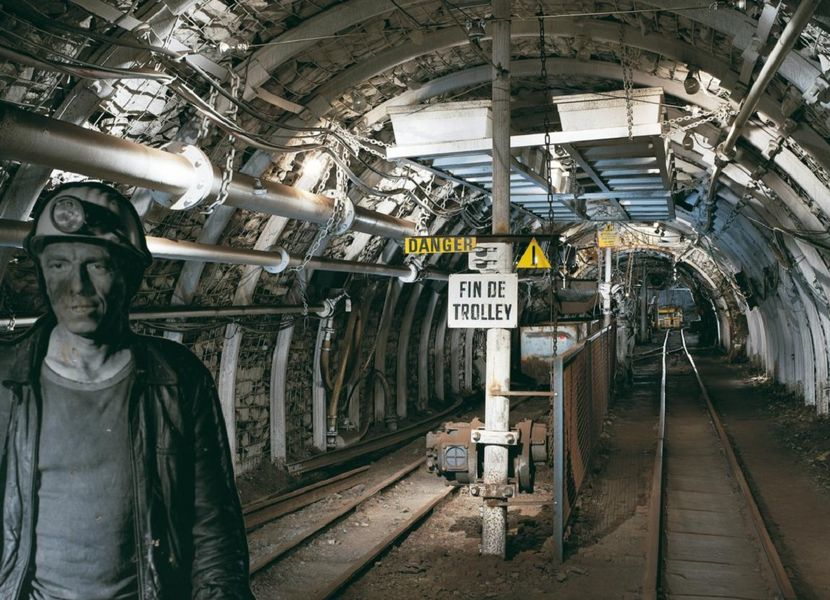
The Museum of Coal Mining. Closed down as a working mine in 1973 the Couriot pit was for many years one of the region’s largest coal seams (yielding up to 3000 tonnes of coal a day in 1950). In 1991 this historic site reopened its doors to the general public as a museum (locker and maintenance rooms, access to the subterranean passage via the mining shafts) guaranteeing each of its visitors a real step back in time (free entrance for ENSM.SE students).
São Paulo
Venue
The Summer School will be held at the Department of Computer Engineering and Digital Systems of the Polytechnic School of the University of São Paulo.
Av. Prof. Luciano Gualberto, tv 3, 158
05508-010 São Paulo - SP
Attractions
São Paulo is one of the largest cities in the world, with over 18 million people in its metropolitan area. It hosts around 15% of Brazilian GDP and is the heart of the Brazilian economy.
It is metropolitan in nature, with a diversified population, composed of Italians, Germans, Japanese (the largest community outside Japan), Lebanese, Chinese, Koreans, Spaniards and, of course, Portuguese.
The São Paulo state road system, composed of modern highways, converges to São Paulo city. Good coaches are available every 30 minutes to Rio de Janeiro (5-hour ride), Belo Horizonte (6-hours), Curitiba (5 hours), and Campinas (1 hour).
The nearby beautiful beaches at Santos and Guarujá cities are accessed by a state-of-the-art highway, with buses every 15 minutes.
It features two of the busiest airports in Brazil: International Airport of Sao Paulo / Guarulhos - Governador André Franco Montoro - or Cumbica Airport – GRU and Congonhas Airport / São Paulo - CGH - with many options for flights abroad and for all major cities in Brazil. Trains are not used for passenger transport only domestic consumer goods.

